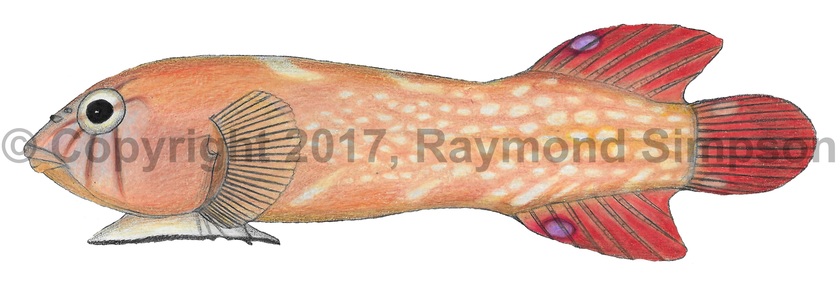
Common Name
Talus Clingfish
Year Described
Fraser, 1970
Identification
Dorsal Fin: 7-8
Anal Fin: 7-9
Pectoral Fin: 28-30
Caudal Fin: 7+7
Vertebrae: 26
Body relatively stout and robust (maximum depth ~3.5 times in SL). Eye relatively small (1.2-1.6 times in interorbital width). Incisor teeth trifid. Gill membranes attached to isthmus. Subopercle without a spine. Three of four gill arches with filaments. Fin rays are all unbranched. Pelvic disk well developed and covered in patches of papillae. Disk region C with a V-shaped patch of papillae in the posterior region. Fleshy pectoral pad poorly developed. Median fins placed far back on body. Tail truncate.
Color
Body salmon to orange-brown with pale spots and lines on body. Eye pale orange with an orange bar bisecting it. Belly and disk pale. Several bright salmon to orange lines radiate from eye. Lines much thinner than interspaces. Median fins body colored grading to bright scarlet red on the outer margins. Bright purple spots on the anterior margin of both dorsal and anal fins have red margins. Two pale spots on the caudal fin base. Pectoral fins clear.
Size
Specimens range from 19.8-27.6mm SL.
Habitat
Found on steep dropoffs and rubble slopes (146-265m). Inhabits areas with small to moderate coral rubble where talus accumulates.
Range
Known only from a few specimens off Arrowsmith Bank off NE Yucatan, Mexico.
References
Fraser, T.H. 1970. Two new species of the clingfish genus Derilissus (Gobiesocidae) from the western Atlantic. Copeia, 38-42.